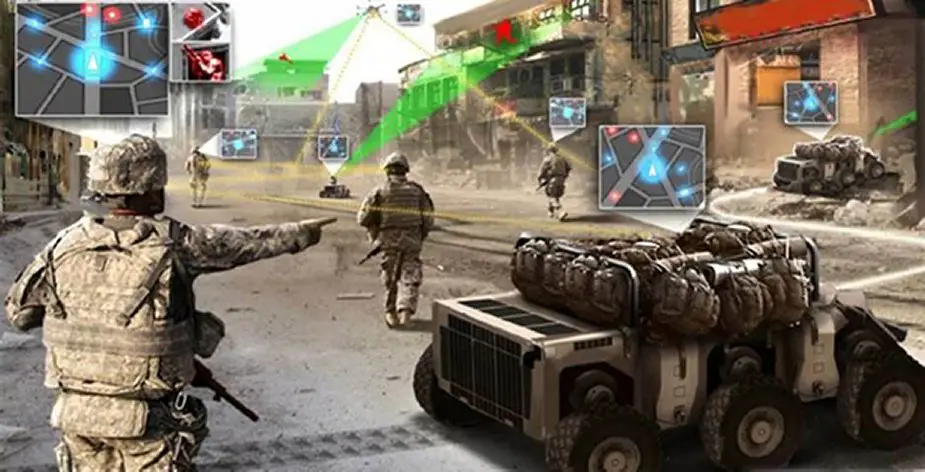The first test of DARPA’s Squad X Experimentation program successfully demonstrated the ability to extend and enhance the situational awareness of small, dismounted units. In a weeklong test series at Twentynine Palms, California, U.S. Marine squads improved their ability to synchronize maneuvers, employing autonomous air and ground vehicles to detect threats from multiple domains – physical, electromagnetic, and cyber – providing critical intelligence as the squad moved through scenarios.

Squad X Improves situational awareness, coordination for dismounted units (Illustration source: DARPA)
Squad X provides Army and Marine dismounted units with autonomous systems equipped with off-the-shelf technologies and novel sensing tools developed via DARPA’s Squad X Core Technologies program. The technologies aim to increase squads’ situational awareness and lethality, allowing enemy engagement with greater tempo and from longer ranges.
The Squad X program manager in DARPA’s Tactical Technology Office, Lt. Col. Phil Root (U.S. Army), said Experiment 1 demonstrated the ability for the squad to communicate and collaborate, even while “dancing on the edge of connectivity.” The squad members involved in the test runs praised the streamlined tools, which allowed them to take advantage of capabilities that previously had been too heavy or cumbersome for individual Soldiers and Marines to use in demanding field conditions. “Each run, they learned a bit more on the systems and how they could support the operation,” said Root, who is also program manager for Squad X Core Technologies. “By the end, they were using the unmanned ground and aerial systems to maximize the squad’s combat power and allow a squad to complete a mission that normally would take a platoon to execute.”
Two performers, Lockheed Martin Missiles and Fire Control and CACI’s BIT Systems, each are working on different approaches to provide unique capabilities to enhance ground infantries. Manned-unmanned teaming is critical to both companies’ solutions.
Marines testing Lockheed Martin’s Augmented Spectral Situational Awareness, and Unaided Localization for Transformative Squads (ASSAULTS) system used autonomous robots with sensor systems to detect enemy locations, allowing the Marines to engage and target the enemy with a precision 40mm grenade before the enemy could detect their movement. Small units using CACI’s BITS Electronic Attack Module (BEAM) were able to detect, locate, and attack specific threats in the radio frequency and cyber domains.
Experiment 2 is currently targeted for early 2019.














